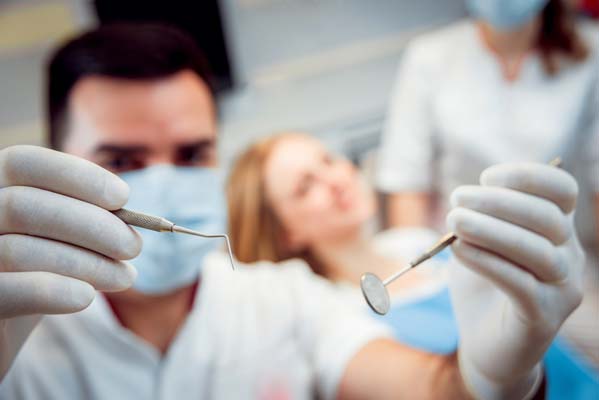Dental Restoration Options for Cavity Treatment

The types of cavity treatments fall into two different categories. Those categories are direct and indirect restorations. Direct forms of cavity treatment include things like fillings made from composite resin and amalgam. Indirect forms are crowns or onlay restorations.
Direct restoration can be completed without the need for work to be done with a dental laboratory. Indirect restoration has to be made using a dental laboratory and cannot be performed directly in the mouth the same way direct restoration can. An indirect restoration is typically used when the patient has extreme damage and tooth decay. Direct restoration is used to repair minor damage to the patient’s teeth.
Fillings
Fillings are a common option for cavity treatment. It is accomplished by inserting material into a tooth in order to fill the cavity. Fillings can be made out of gold, porcelain, amalgam, ceramic, or composite resin. Depending on the type of fillings the patient is having done, the restoration can be done in one to two office visits. If the patient has a composite filling, the procedure can be done in one office visit. However, if the patient has ceramic or porcelain fillings, a second office visit is required. Fillings are used to fix small damaged areas of tooth decay. They are commonly used when there is minor damage to the tooth and can be easily remedied by using one of the above-listed materials.
Crowns
Dental crowns are a type of dental restoration where the entire tooth is covered and is usually made of metal or ceramic materials. This type of dental restoration is used when fillings are not enough to fix an infected or damaged tooth. They are typically used to stop large cavities from destroying the health of the tooth. Essentially, crowns are used to give the tooth a restored look and provide an extra layer of strength. Although the tooth underneath is damaged, the appearance of the tooth on the outside of the crown is perfect.
Bridges
Dental bridges are used to restore one or several missing teeth by joining an artificial tooth to other teeth or dental implants. This is done by using crowns and connecting them to cover several teeth that are damaged. Bridges are basically the same thing as a crown, but they are for multiple teeth and not just a single tooth. They are used to help fix the teeth and make it easier for one to do a daily task, like chewing, talking, or eating.
Implants
A dental implant includes the process of adding an artificial tooth is to the patient’s mouth by drilling a metal post into the jawbone and placing the fake tooth. This is the same procedure as denture implants but on a smaller level, for only a few teeth that once had cavities, instead of a full mouth of teeth.
A customized cavity treatment
There is no one-size-fits-all approach to treating cavities. The dentist will evaluate the needs of the patient in order to create a customized plan. It is not uncommon for dentists to rely on several methods when treating numerous cavities.
Request an appointment here: https://www.sunsetdentalnm.com or call Sunset Dental at (505) 295-4050 for an appointment in our Albuquerque office.
Check out what others are saying about our dental services on Yelp: Cavity in Albuquerque, NM.
Related Posts
General dentists provide essential care to support oral health at every age, including well into adulthood and throughout the golden years. The goal is to help keep the smile in good shape so that it stays healthy, comfortable, and functional. Dental professionals can also address age-related oral health concerns, keeping you on track for a…
General dentistry is responsible for addressing all routine things relating to the teeth, including damage that occurs. Teeth become damaged as a result of many things, such as injury, accidents, natural wear and tear, or cavities. Whatever the reasoning may be for a damaged tooth, there are a lot of treatment options available in general…
When a patient has a cavity, a general dentist thoroughly takes out all the decayed area of the tooth and replaces it with a filling in the empty space to prevent future decay. When it comes to the type of filling, there are various options from which the patient may choose. They each have advantages…
Among the most common dental problems that a general dentist treats are cavities. Most people will experience this form of tooth decay at some point due to:Dry mouthSugary foods and drinksPoor oral hygieneGeneticsThere are several types of cavities, and each can lead to complications without prompt treatment.A general dentist first considers a cavity's location when…
